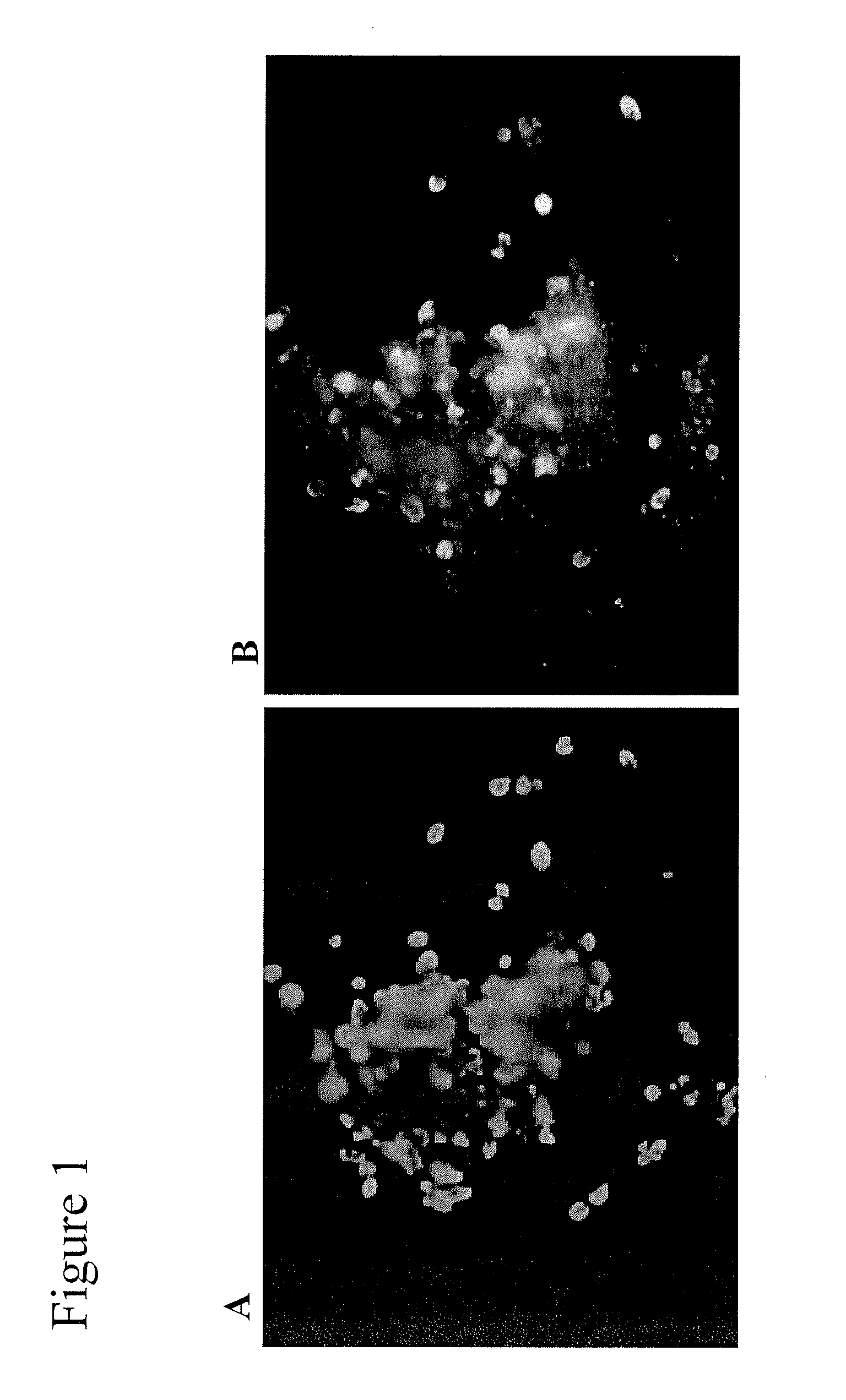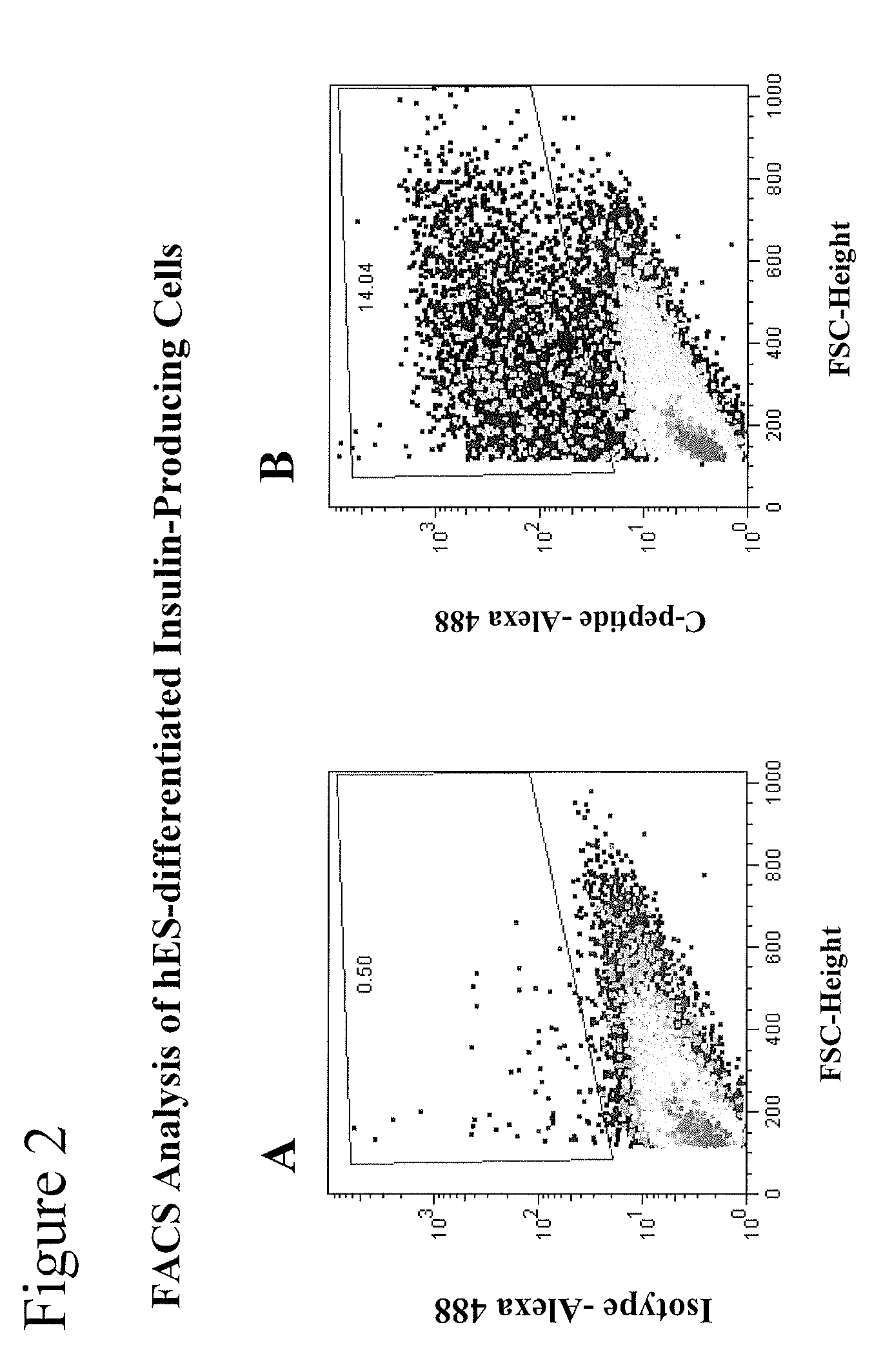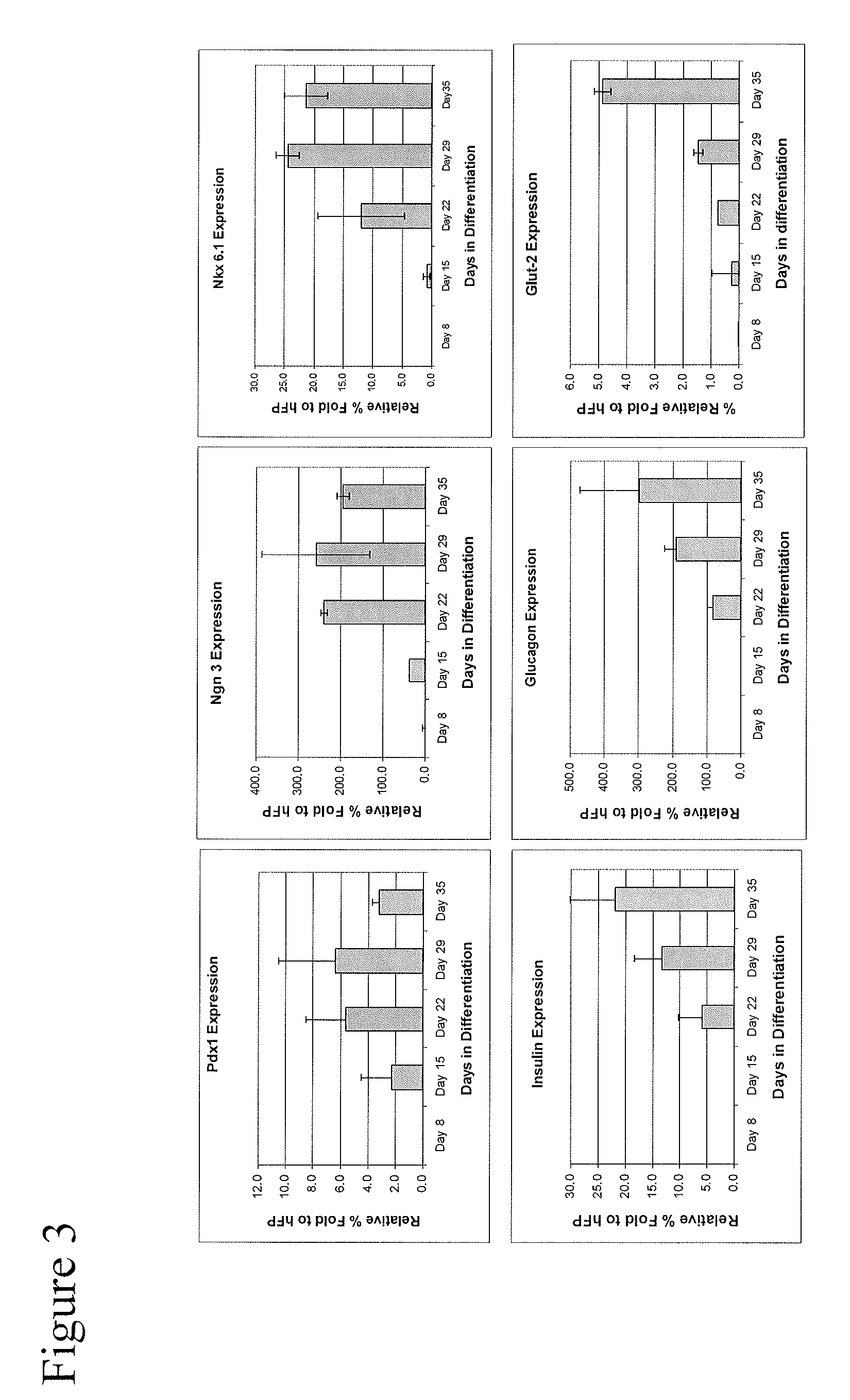Differentiation and enrichment of islet-like cells from human pluripotent stem cells
a technology isletlike cells, which is applied in the field of invitro differentiation of human pluripotent stem cells isletlike cells, can solve the problems of limiting the application of islet transplants as a large-scale therapy, affecting the survival rate of patients with dialysis, and affecting the quality of life of patients
- Summary
- Abstract
- Description
- Claims
- Application Information
AI Technical Summary
Benefits of technology
Problems solved by technology
Method used
Image
Examples
example 1
Differentiation of Human Embryonic Stem Cells into Islet-Like Cells
[0151]H1 human embryonic stem (hES) cells were passaged and cultured in T225 flasks that had been coated with growth factor-reduced Matrigel (BD Biosciences Cat #356231) as described in Xu, C. et al., Nat. Biotechnol. 19(10):971 (2001), for seven days in MEF CM+bFGF (“Culture Medium A”). 75 ml of Culture Medium A was added to each flask.
[0152]On day one of the protocol, the medium of the hES cell culture was changed to 75 ml per flask of RPMI 1640 / B27 supplemented with 1 mM sodium butyrate and 52 ng / ml Activin A (“Culture Medium B”). On day two, the medium was changed to 75 ml per flask of RPMI 1640 / B27 supplemented with 0.5 mM sodium butyrate and 52 ng / ml Activin A (“Culture Medium C”). On days three through seven, the cells were refed every 1-2 days with Culture Medium C at 75 ml per flask.
[0153]On day 8, the cells were treated with 15 ml / T225 flask of 200 U / ml collagenase IV for 5 minutes at 37° C. Then, 20 ml of ...
example 2
Size Separation Enrichment of Islet-Like Cells
[0159]Day 36 cells from a different differentiation of hES cells, performed according to the protocol in Example 1, were collected into an empty 50-ml tube. That cell population contained clusters that had buds formed on their surfaces (see FIGS. 4a and 4b). Immunofluorescent staining of the cluster / bud structures demonstrated that C-peptide expression segregated into the buds (see FIGS. 4c and 4d).
[0160]The day 36 cell population was pipetted 15-20 times with a 25-ml pipette to break apart the cell clusters and buds. FIG. 5 shows micrographs of the cell population before the pipetting step. It can be seen that some of the buds are dissociated from their clusters prior to the pipetting step.
[0161]The resulting cell population was then slowly loaded onto a 70 micron mesh (VWR (BD Biosciences) Catalog #21008-952), placed on top of a 50-ml centrifuge tube, and the medium was allowed to pass through the mesh. The mesh was washed by passing 2...
example 3
Analysis of Size Selected Fractions
[0164]RNA was isolated and analyzed using real-time PCR as in Example 1. For the insulin RNA: the day 36 population had an average Ct value of 36.7; the equal to or less than 70 micron fraction had an average Ct value of 32.1; the 70 to 200 micron fraction had an average Ct value of 29.1; and the greater than 200 micron fraction had an average Ct value of 34.6. For the glucagon RNA: the day 36 population had an average Ct value of 29.7; the equal to or less than 70 micron fraction had an average Ct value of 28.5; the 70 to 200 micron fraction had an average Ct value of 24.3; and the greater than 200 micron fraction had an average Ct value of 27.5. The relative quantitation was normalized with Cyclophillin (Applied Biosystems Inc.), and expressed as a relative percentage fold to human fetal pancreas (Stratagene).
[0165]FIG. 7 shows the expression of insulin, glucagon, PDX-1, and Ngn-3 RNAs in the 70 to 200 micron fraction, which demonstrates the segr...
PUM
| Property | Measurement | Unit |
|---|---|---|
| particle size | aaaaa | aaaaa |
| particle size | aaaaa | aaaaa |
| particle size | aaaaa | aaaaa |
Abstract
Description
Claims
Application Information
 Login to View More
Login to View More - R&D
- Intellectual Property
- Life Sciences
- Materials
- Tech Scout
- Unparalleled Data Quality
- Higher Quality Content
- 60% Fewer Hallucinations
Browse by: Latest US Patents, China's latest patents, Technical Efficacy Thesaurus, Application Domain, Technology Topic, Popular Technical Reports.
© 2025 PatSnap. All rights reserved.Legal|Privacy policy|Modern Slavery Act Transparency Statement|Sitemap|About US| Contact US: help@patsnap.com



